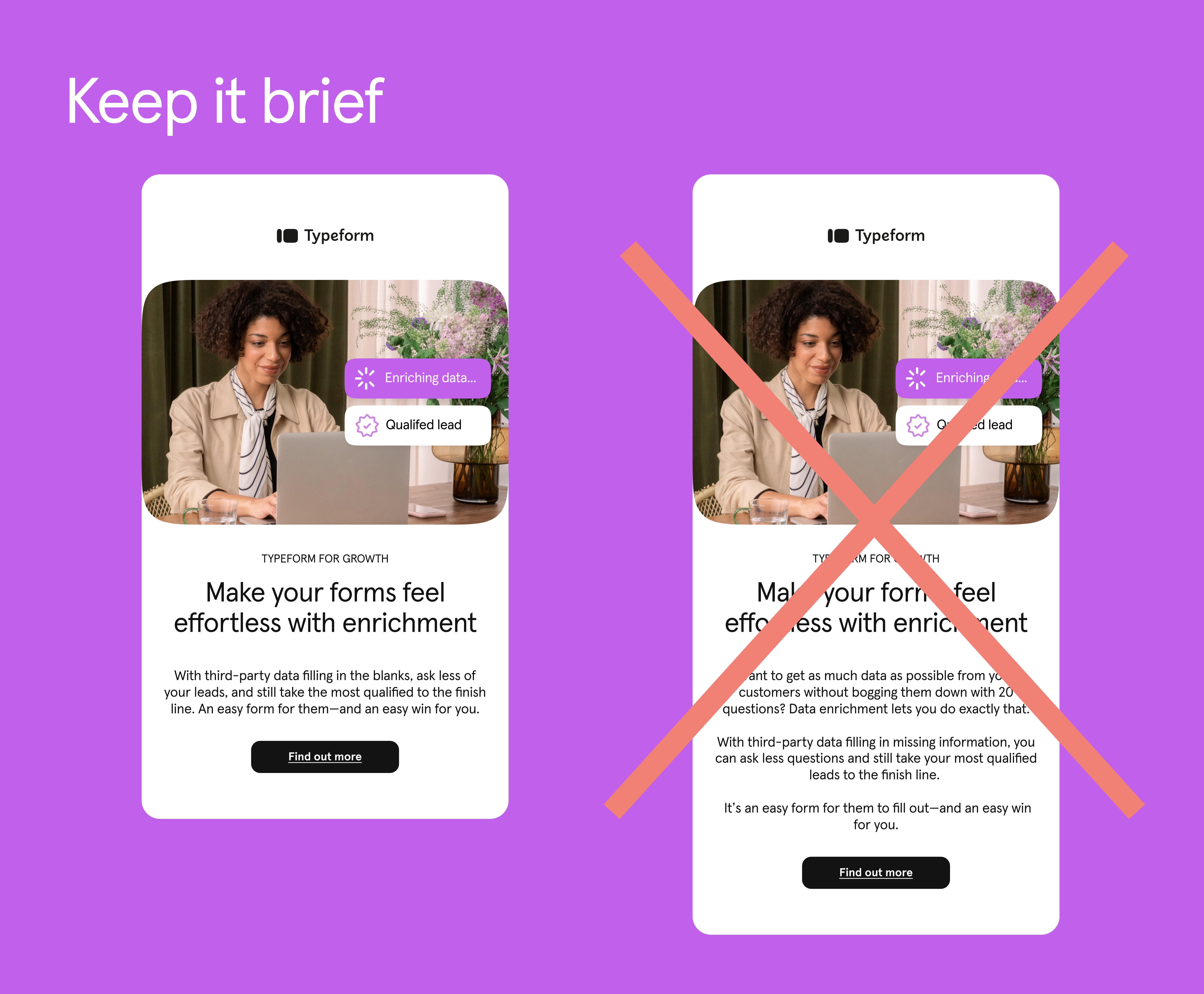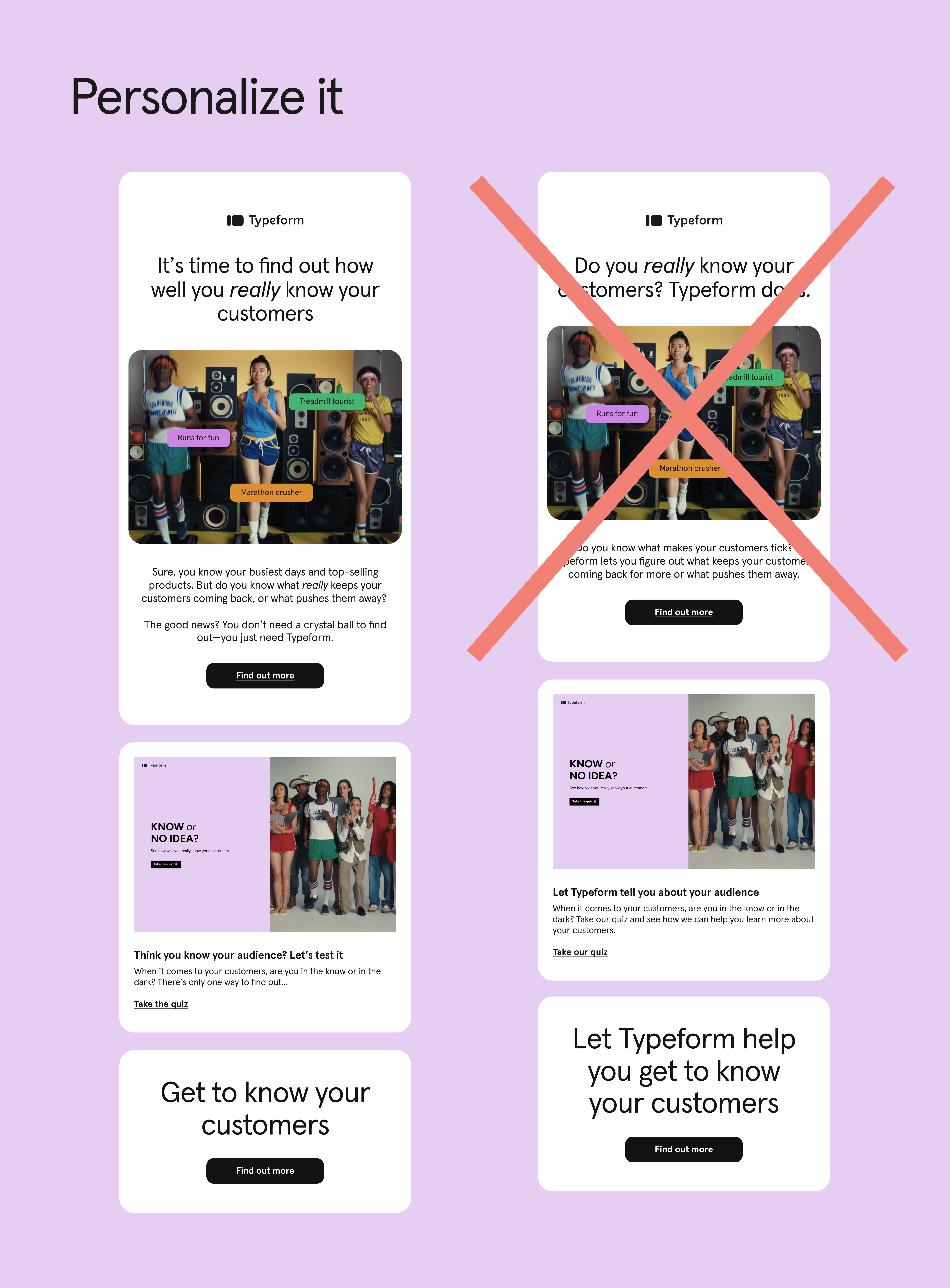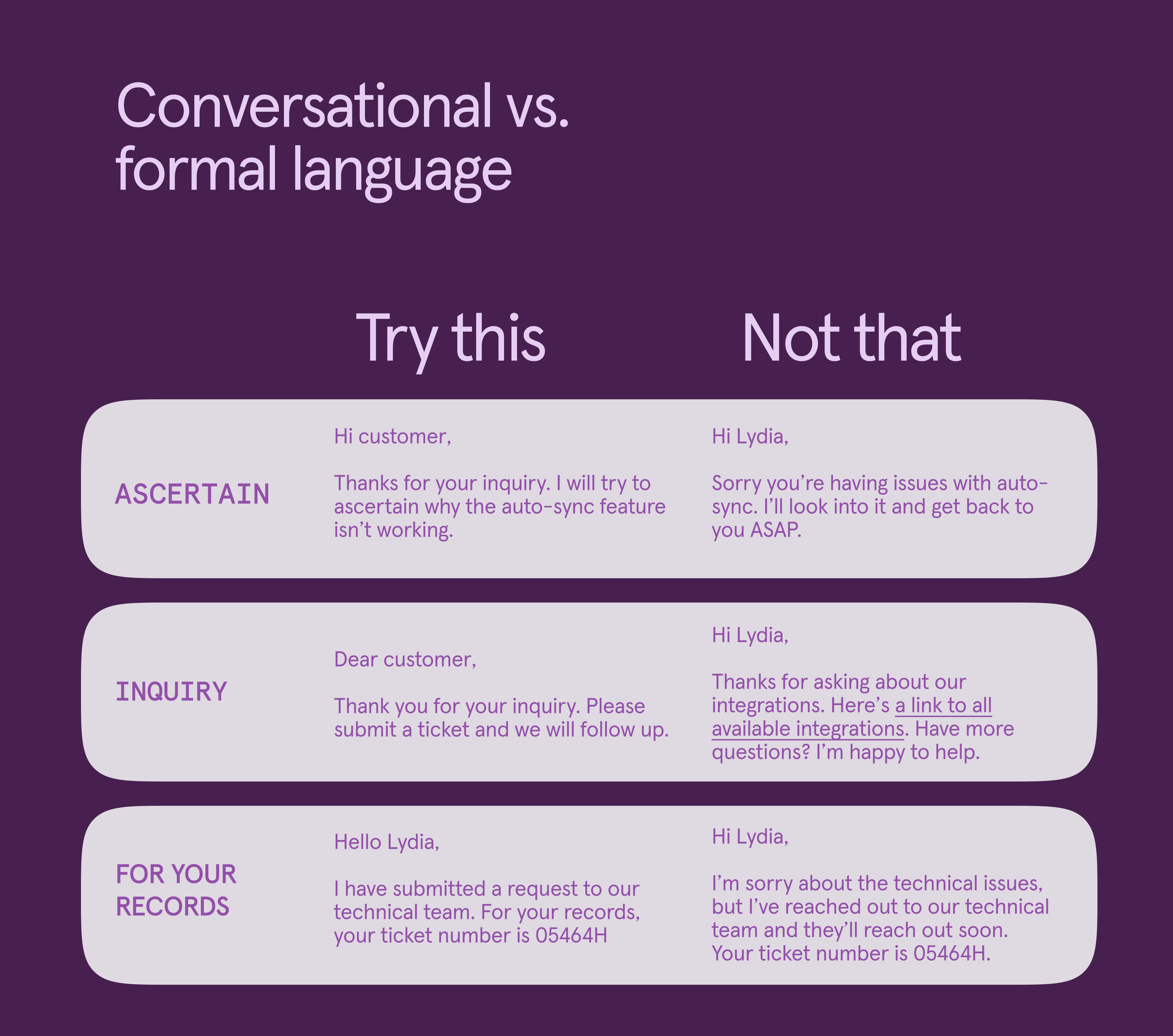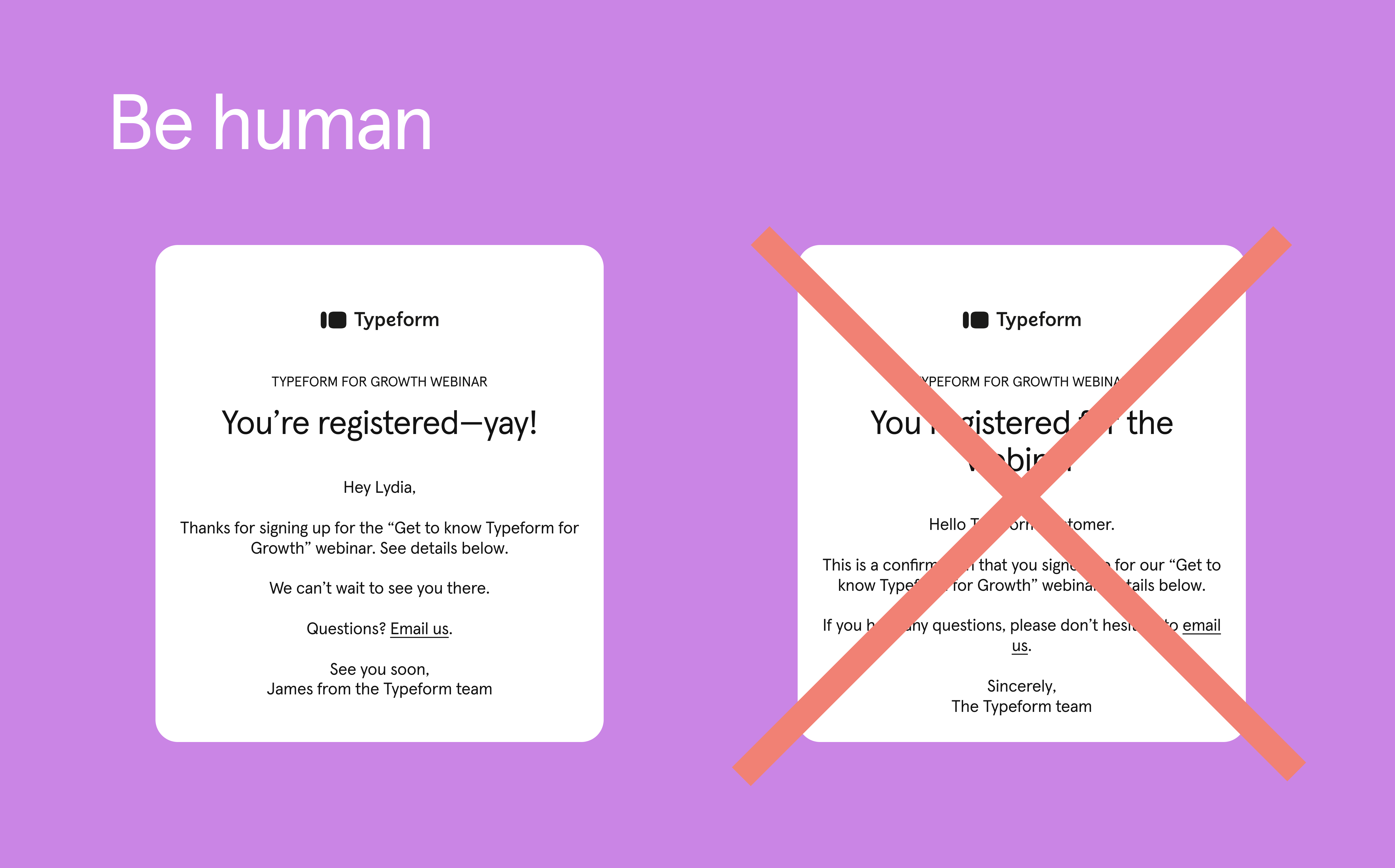Opinions and Expertise
4 tips for starting online conversations with your customers (and how to apply them to conversational marketing)
Want to connect with your audience on a human level? Start with these tips and apply them to your broader marketing efforts, too!

Contents
We’re not exaggerating when we say that artificial intelligence (AI) has revolutionized marketing—and broader business—since its widespread adoption in 2022. People and processes became more efficient.
But in the age of AI, have we lost our ability to have truly human conversations? AI can write our emails. It can answer customer questions. And it' s made us all a little less human when we do communicate person to person, not bot to human.
So, we’re brushing up on our online communication skills and sharing tips on how you can have more human conversations with your customers (and how to apply them to conversational marketing).
1. Putting the person back in personable
AI can help us speed up processes and automate mundane tasks, but when it comes to conversational writing and building genuine connections with your audience, we' re pro-human.
We' ve rounded up a few tips on how to write conversationally online and have more human interactions with your customers.
Keep it brief
Whether you' re the next literary great or simply responding to customer emails, no one will read that carefully crafted 12-paragraph email. They just won' t. Or that help article that' s over 5,000 words. No way.
So, how do support your customers without overwhelming them? Keep it brief.
Human attention spans have become shorter and customers expect you to get to the point—and fast. Digital conversations are about saying as much as you need to get the point across, but nothing more. Try these quick fixes to keep your content concise and your audience engaged:
- Keep paragraphs short—customers will skip over large blocks of text
- Break up text with images, videos, or even GIFs—they' re a great way to show you' re human and relatable
- Link to other resources instead of typing out everything
- Get rid of fluffy formalities, like " I hope this email finds you well"
- Use bullet points to make content more skimmable
Your customers will appreciate that you' ve respected their time by answering their questions quickly, which can build trust over time.
But it' s not just your response emails that should be short. Email marketing, help articles, website copy—they should all tell your customers what they need to know without adding unnecessary details.
2. Personalize communications
We know... online communication will never be as personal as face-to-face conversations. But that doesn' t mean you can' t be personable online. There' s an art to conversational writing and deploying simple tactics like treating your customer as a person goes a long way.
Here are some other ways you can have more human digital conversations:
- Use their name. A simple, " Hi Lydia!" is warmer and more casual than " Dear customer." But make sure you get it right—Katie is not Kate or Cate or Katy—to build trust. If they' ve shared that they prefer a name other than their given name, add it to your CRM and use that name going forward.
- Mimic their tone. Are your customers more casual but you' re using overly formal language like " dear," " whom," or " sincerely?" Building trust through conversational writing can be challenging.
But if you mimic (to a degree) how your customers communicate, you can connect better and create a sense of trust—they' ll feel like they' re talking to a person, not an intangible business or unmonitored inbox. - Use human language. Connect with your customers by addressing them as " you" and referring to yourself as " I" or " we." It feels more like a one-on-one conversation with a person rather than a robot who wrote an impersonal " We' ll get back to you with an answer" email.
While these are all relatively simple writing tips, they can leave a lasting impression on customers. They build relationships between the people behind the brand and your customers... making your brand feel more human (and your customers feel personally cared for).
3. Use plain language
Contrary to popular belief, using academic words does not make you sound smarter. And it frustrates your customers. No one should have to dust off their dictionary to understand what you' re trying to say.
Crafting engaging content for digital platforms is about being relatable—words like " ascertain" just won' t cut it. Take a look below and see which terms you prefer. We' re guessing they' re the less technical phrases.
Pro tip: Don' t assume your customers' level of education or technical prowess. Keep it simple and easy to understand—for anyone.
4. Move away from transactional conversations
Imagine spending hundreds or thousands of dollars a year with a company and that being the only thing they care about. Not you as a person. Not about supporting you. Just how much money you spend with them.
Not a good look. And, while we know that businesses are in the business of making money, there' s no reason you can' t also treat your customers as humans, not transactions.
Personalization can help combat this, but we' ve got some other ways you can prioritize human connection:
- Use feedback surveys to check in regularly with customers
- Communicate upcoming changes proactively
- Use human language and make sure you encourage two-way online conversations—they should feel like they can communicate back with you
- Treat your customers with respect
How to apply conversational writing to conversational marketing
Learning how to write conversationally online is a good first step in creating more human emails and interacting with your customers, but it doesn' t have to stop there.
You can apply conversational writing to another facet of your business: marketing. Let' s explore a new type of marketing—conversational marketing.
What is conversational marketing?
It' s a single word, but it makes all the difference when you' re discussing conversational marketing. What is it? " With."
While traditional marketing is more brands talking at customers, conversational marketing is about about talking with your customers. If the traditional approach is one-way communication, conversational marketing is a two-way dialogue between brand and customer.
It happens in real time and is personalized on an individual level instead of broadly targeting groups of customers who share similar attributes. How? By inviting customers to have a conversation with you... and listening to what they have to say.
Conversational marketing is a mix of a few things—and, you guessed it, they all revolve around being human:
- Instant interactions
- Personalization
- Relationship-building
- Customer-centricity
- An open feedback loop
And the best part is that you can leverage the tips we already discussed to make each aspect even more impactful.
Instant interactions
Instant interactions (real time), like those on messaging apps and live chat, provide immediate support and faster responses to your customers. But they' re also an opportunity to have a two-way conversation with your customers.
Remember, using friendly and approachable language makes the back-and-forth feel more conversational and natural.
Pro tip: Go where your customers are. If they prefer SMS messages over live chat, offer that option.
Personalization
Next up? Personalization—the foundation of conversational marketing. By having a dialogue with your customers, you get to know them better and start to understand their unique needs.
Use those conversations as a way to collect data and invaluable insights. Then, tailor your communication and offer relevant solutions. Don' t forget to personalize how you communicate, too:
- Use their name
- Speak plainly
- Writing in a relatable way that builds on your relationship
Relationship-building
Conversational marketing helps you build relationships by having one-to-one conversations with your customers that garner trust. While traditional marketing can generate leads and grow revenues, it' s less about building genuine relationships with customers.
Here' s the thing though: customers who have no connection with your brand outside of transactions typically don' t become loyal customers.
But conversational marketing gives you a chance to build relationships and nurture customers into loyal fans over time. Here' s how:
- You treat them as humans, not dollar signs
- You use personalization that shows you value their experience with you
- You create a dialogue instead of talking at your customers
- You listen to your customers and use what they say to improve
Pro tip: Send customers forms that are effortless to fill out so they' re more likely to complete them. Collect feedback, gather data, and start conversations.
Customer centricity and an open feedback loop
Customer centricity is a core part of conversational marketing because it focuses on listening to customers—not talking about you. While conversational writing is less in play here, it' s more about how you communicate than what exactly you say.
Show customers you' re here for them and to listen. Not to blast marketing messages at them or share irrelevant information. And take every conversation as a chance to learn from your customers.
The best way to do that? Have a two-way conversation that creates an open feedback loop. That loop will help you not only better understand your customers and create more personalized strategies, but it can also help you:
- Create better customer experiences
- Build better products
- Enhance your level of service
- And much more
Who’s ready for authentic online conversations?
In an increasingly automated and AI-driven marketing world, it can be so easy to have AI do everything... including talking to your customers.
But your customers want genuine connections with the brands they patronize. They want personalized experiences. They want human conversations.
These tips are a good starting point. But it' s up to you to create two-way conversations with your customers, tailor your online communication with them, and build genuine relationships.
And we' re not saying you can' t use automation. Just make it human.






.png)
.png)